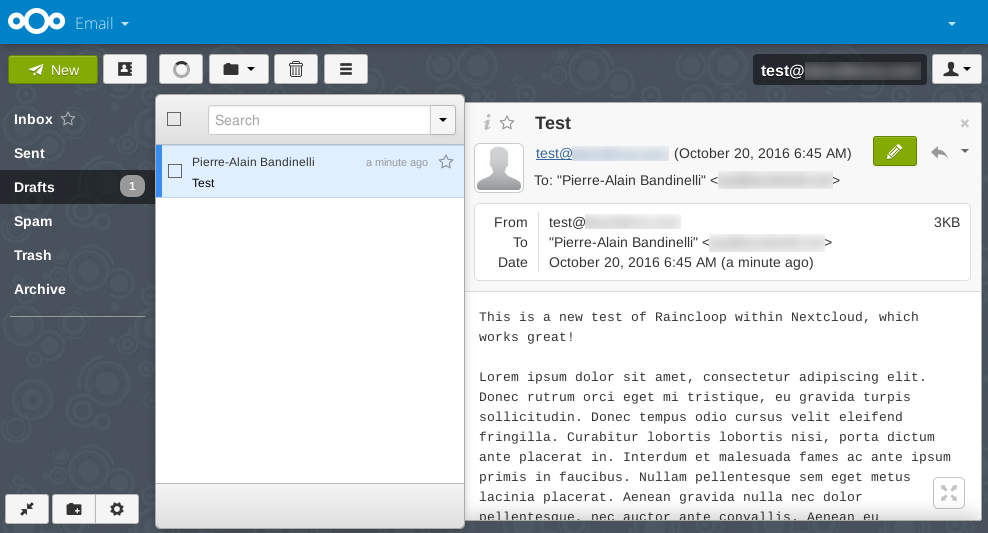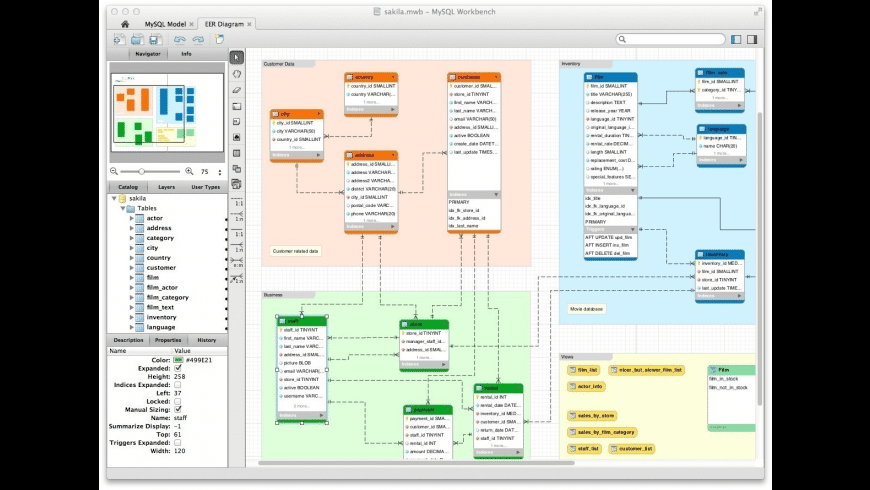2.4.2 Installing MySQL on macOS Using Native Packages


Mac Install Mysql Client
The package is located inside a disk image (.dmg) file that you first need to mount by double-clicking its icon in the Finder. It should then mount the image and display its contents.
Before proceeding with the installation, be sure to stop all running MySQL server instances by using either the MySQL Manager Application (on macOS Server), the preference pane, or mysqladmin shutdown on the command line.
- MySQL Cluster is a real-time open source transactional database designed for fast, always-on access to data under high throughput conditions. MySQL Cluster Plus, everything in MySQL Enterprise Edition.
- I use MySQL GUI clients mostly for SQL programming, and I often keep SQL in files. My current favorites are: DBVisualizer Not free but I now use.
To install MySQL using the package installer:
Download the disk image (
.dmg) file (the community version is available here) that contains the MySQL package installer. Double-click the file to mount the disk image and see its contents.Figure 2.14 MySQL Package Installer: DMG Contents
Double-click the MySQL installer package from the disk. It is named according to the version of MySQL you have downloaded. For example, for MySQL server 5.7.33 it might be named
mysql-5.7.33-osx-.10.13-x86_64.pkgThe initial wizard introduction screen references the MySQL server version to install. Click to begin the installation.
Figure 2.15 MySQL Package Installer Wizard: Introduction
The MySQL community edition shows a copy of the relevant GNU General Public License. Click and then to continue.
From the Installation Type page you can either click to execute the installation wizard using all defaults, click to alter which components to install (MySQL server, Preference Pane, Launchd Support -- all enabled by default).
Although the option is visible, the installation location cannot be changed.
Figure 2.16 MySQL Package Installer Wizard: Installation Type
Figure 2.17 MySQL Package Installer Wizard: Customize
Click to begin the installation process.
After a successful installation, the installer displays a window with your temporary root password. This cannot be recovered so you must save this password for the initial login to MySQL. For example:
Figure 2.18 MySQL Package Installer Wizard: Temporary Root Password
MySQL expires this temporary root password after the initial login and requires you to create a new password.
Summary is the final step and references a successful and complete MySQL Server installation. the wizard.
Figure 2.19 MySQL Package Installer Wizard: Summary
Navicat for MySQL, DBeaver, and Sequel Pro are probably your best bets out of the 15 options considered. 'Excellent choice of import/export options' is the primary reason people pick Navicat for MySQL over the competition. This page is powered by a knowledgeable community that helps you make an informed decision.
MySQL server is now installed, but it is not loaded (or started) by default. Use either launchctl from the command line, or start MySQL by clicking 'Start' using the MySQL preference pane. For additional information, see Section 2.4.3, “Installing a MySQL Launch Daemon”, and Section 2.4.4, “Installing and Using the MySQL Preference Pane”. Use the MySQL Preference Pane or launchd to configure MySQL to automatically start at bootup.


When installing using the package installer, the files are installed into a directory within /usr/local matching the name of the installation version and platform. For example, the installer file mysql-5.7.33- installs MySQL into osx10.13-x86_64.dmg/usr/local/mysql-5.7.33-osx10.13-x86_64/ . The following table shows the layout of the installation directory.
Table 2.7 MySQL Installation Layout on macOS
| Directory | Contents of Directory |
|---|---|
bin | mysqld server, client and utility programs |
data | Log files, databases |
docs | Helper documents, like the Release Notes and build information |
include | Include (header) files |
lib | Libraries |
man | Unix manual pages |
mysql-test | MySQL test suite |
share | Miscellaneous support files, including error messages, sample configuration files, SQL for database installation |
support-files | Scripts and sample configuration files |
/tmp/mysql.sock | Location of the MySQL Unix socket |
During the package installer process, a symbolic link from /usr/local/mysql to the version/platform specific directory created during installation will be created automatically.
MySQL supports deployment in virtualized environments, subject to Oracle KM Note 249212.1. For further details, please contact the MySQL Sales Team.
Important Platform Support Updates »

Client For Mysql Mac Os Versions
| 8.0 | 5.7 | 5.6 | ||
|---|---|---|---|---|
| Operating System | Architecture | |||
| Oracle Linux / Red Hat / CentOS | ||||
| Oracle Linux 8 / Red Hat Enterprise Linux 8 / CentOS 8 | x86_64, ARM 64 | • | ||
| Oracle Linux 7 / Red Hat Enterprise Linux 7 / CentOS 7 | ARM 64 | • | ||
| Oracle Linux 7 / Red Hat Enterprise Linux 7 / CentOS 7 | x86_64 | • | • | • |
| Oracle Linux 6 / Red Hat Enterprise Linux 6 / CentOS 6 | x86_32, x86_64 | • | • | • |
| Oracle Solaris | ||||
| Solaris 11 (Update 4+) | SPARC_64 | • | • | • |
| Canonical | ||||
| Ubuntu 20.04 LTS | x86_64 | • | ||
| Ubuntu 18.04 LTS | x86_32, x86_64 | • | • | |
| Ubuntu 16.04 LTS | x86_32, x86_64 | • | • | |
| SUSE | ||||
| SUSE Enterprise Linux 15 / OpenSUSE 15 | x86_64 | • | ||
| SUSE Enterprise Linux 12 (12.4+) | x86_64 | • | • | • |
| Debian | ||||
| Debian GNU/Linux 10 | x86_64 | • | • | |
| Debian GNU/Linux 9 | x86_32, x86_64 | • | • | • |
| Microsoft Windows Server | ||||
| Microsoft Windows 2019 Server | x86_64 | • | ||
| Microsoft Windows 2016 Server | x86_64 | • | • | • |
| Microsoft Windows 2012 Server R2 | x86_64 | • | • | • |
| Microsoft Windows | ||||
| Microsoft Windows 10 | x86_64 | • | • | |
| Apple | ||||
| macOS 10.15 | x86_64 | • | ||
| FreeBSD | ||||
| FreeBSD 12 | x86_64 | • | ||
| Various Linux | ||||
| Generic Linux (tar format) | x86_32, x86_64, glibc 2.12, libstdc++ 4.4 | • | • | • |
| Yum Repo | • | • | • | |
| APT Repo | • | • | • | |
| SUSE Repo | • | • | • | |
